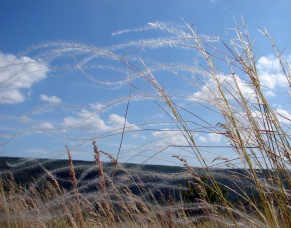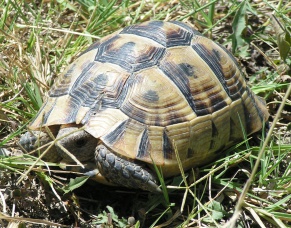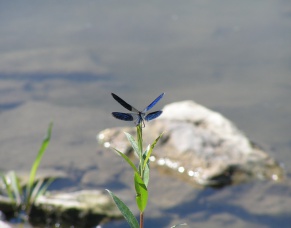Rusenski Lom Nature Park
Nature
Nature in Nature Park Rusenski Lom and Protected area Kalimok-Brashlen
The unique appearance of Rusenski Lom is shaped by mosaic landscapes of forests, lands of high nature value – pastures and wet meadows and agricultural fields. The largest at scale are the forest deciduous ecosystems dominated by Silver Lime, Elm, Oriental Hornbeam and different species of Oak. Old trees hollows shelter the Tawny Owl, Woodpeckers and Stock Dove. The Long-eared Owl makes use of the abounded Crow’s nests. Because of all 172 protected bird species found here the Park is included in the list of Important Bird Area and is Natura 2000 site.
There are 16 species of Orchid’s family found in the Park. Among them the most interesting and rare is the Balkan Lizard Orchid. It produces specific smell, which attracts flies providing pollination to the specie. Purple and Monkey Orchid as well as Large White and Long-leafed Helleborine are other species of the family, which could be found here.
Among 200 bird species found in the Park the Egyptian vulture is the one getting most quickly extinct in the world. It winters in Africa, and Rusenski Lom is as far north it would spend the summer.
The Black storck is chosen to be the symbol of the Park. It is endangered species, which in Central Europe and along the Danube nests in forests and here – on rocks. Having once found a mate, the pair’s love goes on forever. Parents take turns in taking care of their offspring.
The Protected area Kalimok Brashlen consists of ecosystems of great conservation value. Such are riparian floodplain forests – spread on Danube islands; alluvial sediments along Danube; riparian slightly saline pastures and mesophilic meadows with tall grasses.
Here rein White Waterlily, Yellow Floating-heart, Gibbous duckweed and Fen Ragwort.
The Large-fruited horseradish is endemic specie for Danube basin. It survives durable flooding and starts vegetation after decrease of water levels.
The Protected area is ornithological important site. It is a breeding place for Dalmatian pelican and Eurasian Spoonbill. There could be found one of the biggest colonies of Herons (Ardea) in Bulgaria and some of the last century-old elms, black poplars and oaks.
This part of Danube is important habitat for some of the rarest fish on the planet – sturgeons: Beluga, Stellate sturgeon, Russian sturgeon.
The Wild Danube Carp is one of the most endangered species tightly connected to the marshes water cycle.



_291x228.JPG)

